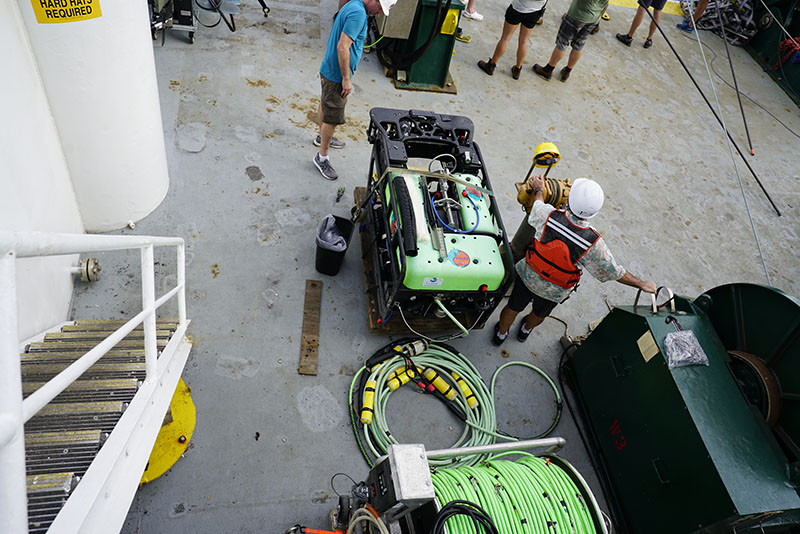

A view of a remotely operated vehicle (ROV) from the Marine Applied Research and Exploration (MARE) on the deck of Research Vessel Kilo Moana during the Deepwater Surveys of World War II U.S. Cultural Assets in the Saipan Channel expedition. The ROV is equipped with video and still cameras and can go to depths over 600 meters (1,970 feet). The ROV will collect imagery at the locations of anomalies found in the side-scan sonar data collected by the REMUS 600 vehicles being used during the expedition. The imagery helps researchers identify the anomalies and can be used to produce 3D models and orthomosaics of any cultural artifacts found during the expedition, preserving them in their current state and allowing for further study and documentation.